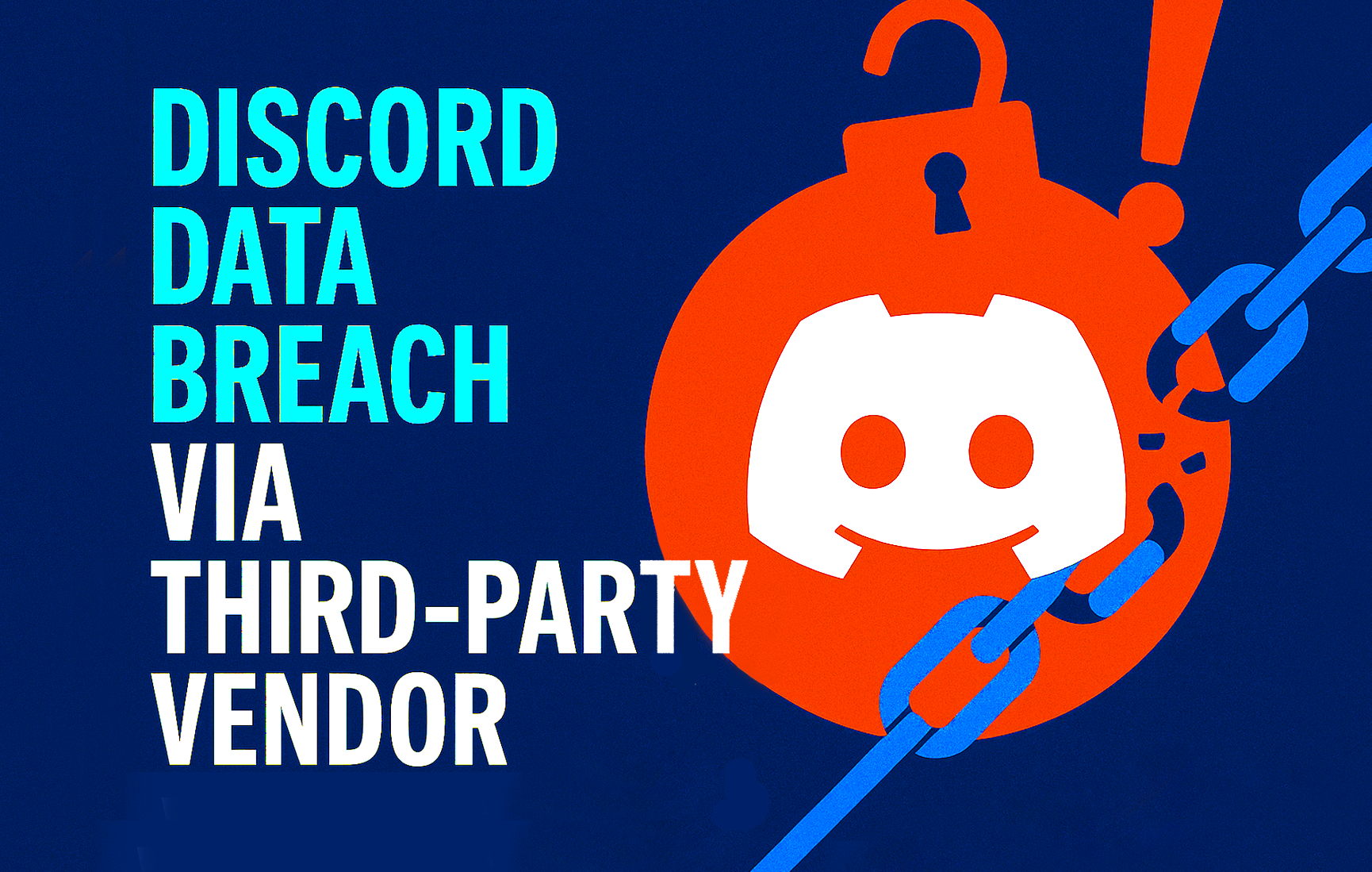Discord’s Vendor Breach Exposed More Than Data. It Exposed a Risk Every Business Faces
In early October, Discord disclosed that a third-party vendor supporting its customer service operations had been breached, exposing user data including names, emails, and government ID photos. The contractor, 5CA, provided age-verification services. Attackers accessed internal support systems, stealing images and metadata tied to verification requests.
Discord emphasized that no passwords or credit card data were compromised, and that its core systems remained secure. But for users whose identity documents are now circulating online, that distinction offers little comfort. You can change a password. You can’t change a passport.
The company cut ties with the vendor and launched an investigation with law enforcement. Yet the damage to user trust, public perception, and brand equity was already done. The Discord breach is a textbook example of what happens when an organization’s security posture doesn’t extend far enough beyond its own walls.
The Weakest Link Problem
In today’s interconnected economy, businesses rarely operate in isolation. They rely on vendors for everything from customer service and payroll to data analytics and cloud hosting. Each relationship creates new entry points for attackers.
According to Black Kite’s 2024 study, 61% of data breaches originated through third-party vulnerabilities. The issue isn’t that companies don’t care about security; it’s that vendor ecosystems are sprawling, dynamic, and difficult to police.
A single weak vendor can nullify millions of dollars spent on internal defenses. Discord’s internal systems were sound, but its vendor became the gateway. It’s a risk that applies as much to hospitals and banks as to tech platforms.
The Real Cost of “We’ll Handle It Later”
When budgets tighten, risk management is often among the first areas to shrink. It doesn’t directly generate revenue, and its ROI is hard to quantify until a breach happens.
A solid vendor risk program might cost a few hundred thousand dollars a year. A single incident like Discord’s can cost millions in investigations, legal settlements, and regulatory fines. Add the hidden costs. Brand damage, customer attrition, and lost investor confidence and the financial impact multiplies.
The math is straightforward: proactive risk management costs less than reactive damage control. Yet many boards and finance teams still treat it as a compliance checkbox instead of a business safeguard.
Trust as Currency
Security and trust are inseparable. Customers expect companies to protect their information, and once that trust is broken, it’s rarely repaired.
This is why modern governance and risk programs aren’t just about compliance. They’re about credibility. Companies that can demonstrate real, ongoing vendor oversight differentiate themselves in competitive markets. In finance, healthcare, and SaaS, strong third-party governance is now a selling point, not an afterthought.
That requires more than annual questionnaires. It means continuous monitoring, access segmentation, incident-response integration, and contractual accountability. When vendors are treated as part of your infrastructure, not an external dependency, risk visibility improves dramatically.
Compliance Isn’t Enough
Too many organizations mistake certifications for security. Passing a SOC 2 or ISO audit is valuable, but those frameworks capture a moment in time. Threat landscapes shift faster than annual reviews can keep up.
That’s why leading enterprises now use continuous risk monitoring tools that automatically track changes in a vendor’s security posture. If a vendor is breached or loses compliance, alerts trigger instantly. It’s a simple shift from static oversight to dynamic defense, but it separates resilient organizations from reactive ones.
The Discord breach shows what happens when oversight lags. By the time a company learns of a vendor’s compromise, customer data may already be in circulation.
Risk as Strategy
The best organizations no longer view governance, risk, and compliance (GRC) as red tape. They see it as a form of business intelligence. A way to understand dependencies, measure resilience, and communicate accountability to customers and investors.
A strong risk posture doesn’t just prevent losses; it enables faster, more confident growth. Investors and regulators alike reward transparency and preparedness. Risk management, done right, isn’t a defensive play. It’s an enabler.
The Takeaway
The Discord incident is more than a tech headline; it’s a case study in how vendor oversight defines brand reputation. Outsourcing a function doesn’t outsource the responsibility.
Businesses must budget for and prioritize risk management with the same seriousness they reserve for sales or product development. Because when a vendor fails, your customers won’t blame them, they’ll blame you.
The lesson is clear: invest in your vendors’ security as if it were your own. In the era of interconnected risk, it is.

